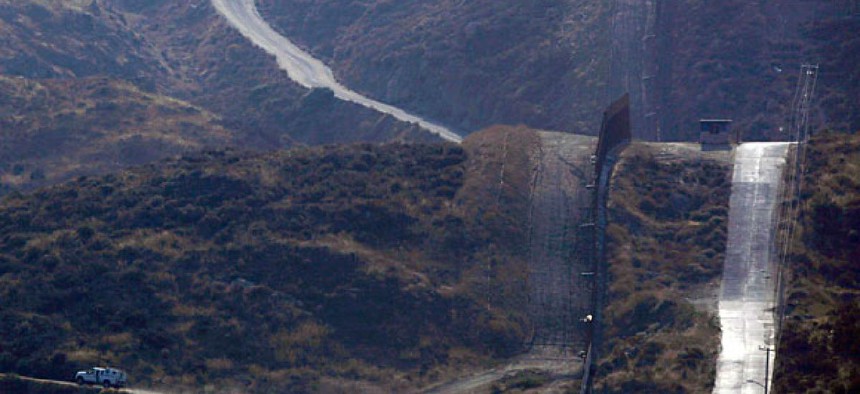Virtual border fence contract postponed due to fierce competition

Guillermo Arias/AP
Deal for SBInet replacement delayed by nine months.
A digital border security project slated to replace an aborted $1.5 billion system has been delayed by unexpected competition from vendors that want the work.
Customs and Border Protection had planned on a Jan. 1, 2013, deadline for selecting a contractor to revamp the now-abandoned Secure Border Initiative network. But a flood of submissions has left CBP pressed for time. The agency now expects to sign an eight and a half year deal by Oct. 1, 2013, which would mean a 2022 completion date.
When asked about the status of the contract this week, CBP officials said the job has not been assigned yet and referred to an October industry notice describing a new procurement timeline.
The agency is choosing from an unspecified “larger number of proposals than originally estimated,” and “the quantity of proposals will extend the schedule to complete the evaluation process,” the update stated.
The review is not just a matter of analyzing paperwork or inspecting equipment. Applicants judged to be “within the competitive range” must operate, in front of government eyes, production-line-ready technology that remains functioning under harsh desert conditions, according to contracting documents. Those presentations are scheduled to occur between January and April 1, 2013, the October notice stated.
The Homeland Security Department in 2011 canceled Boeing Co.’s SBInet contract after planners determined the demands of the system were unattainable and excessive. CBP began accepting applications for the new initiative in April.
The technology companies are vying to dot border areas with sets of camera-flanked surveillance towers suited to each region’s terrain. SBInet would have blanketed the Southwest with costlier, one-size-fits-all towers all networked together, and sporting radar and other sophisticated technology.
This second try will start in Nogales, Ariz., and then expand within the state to at most five tower clusters in Sonoita, Douglas, Casa Grande, Ajo and Wellton.
The system requirements no longer call for radar, which is futile in heavily trafficked towns, or the need to detect 70 percent of incursions within a given coverage area.
"We're starting with what is readily available," Mark Borkowski, assistant commissioner for CBP's Office of Technology Innovation and Acquisition, said in April. "Industry has got to prove it to us it's readily available."
NEXT STORY: Interior revamps business center






